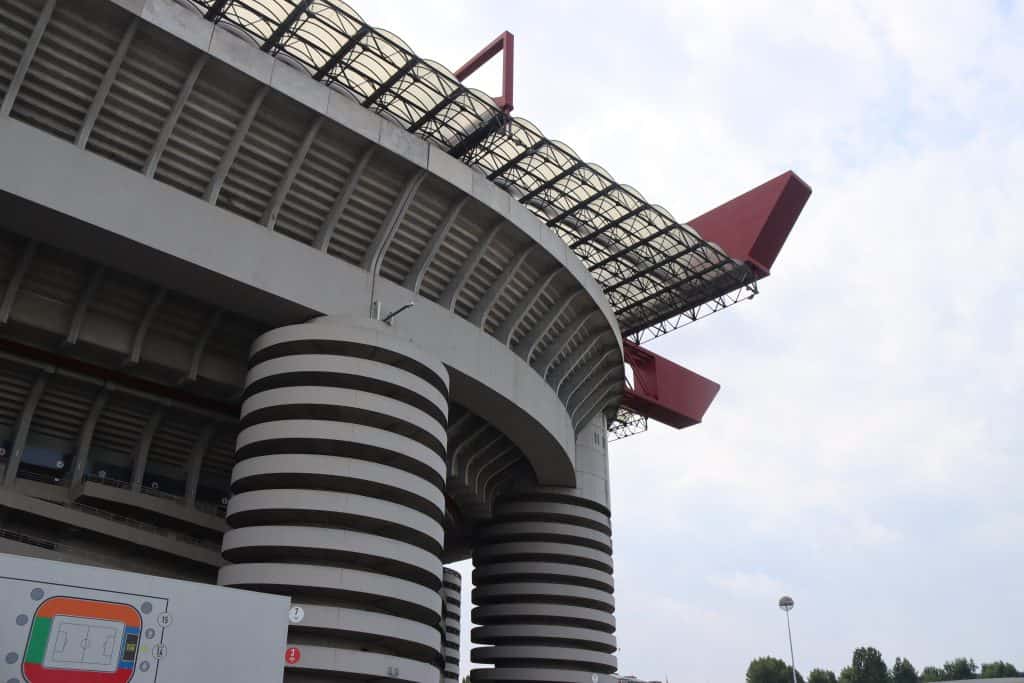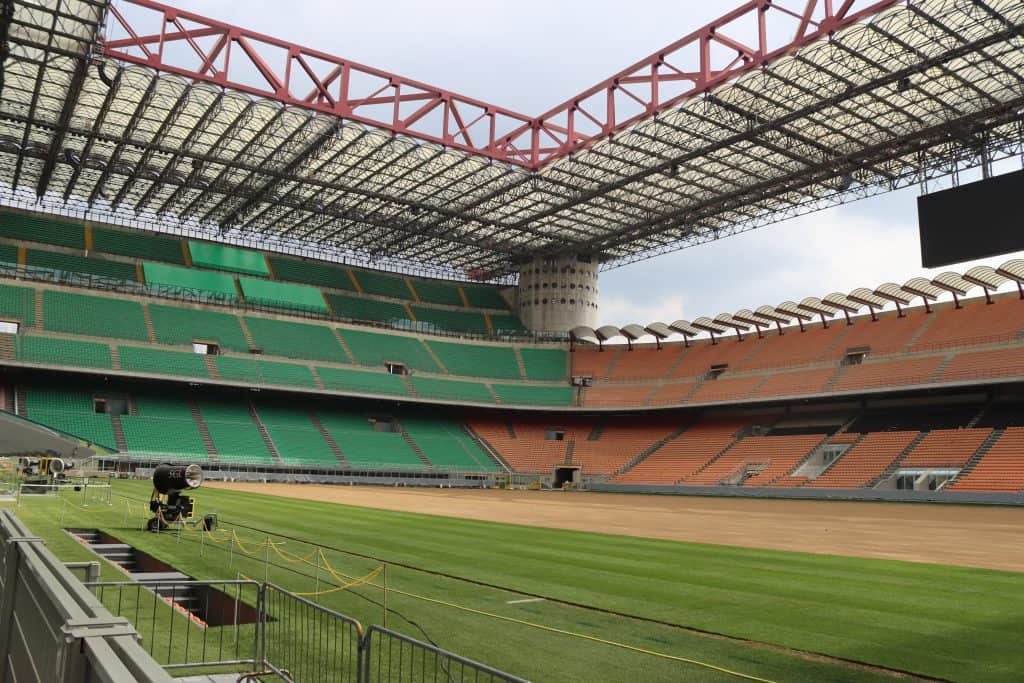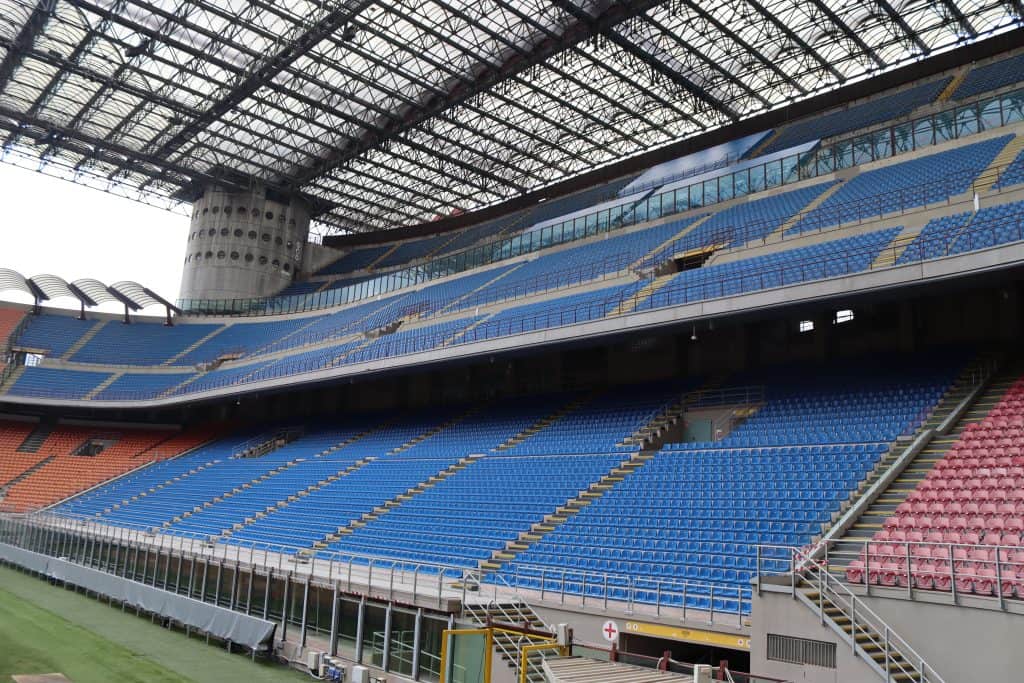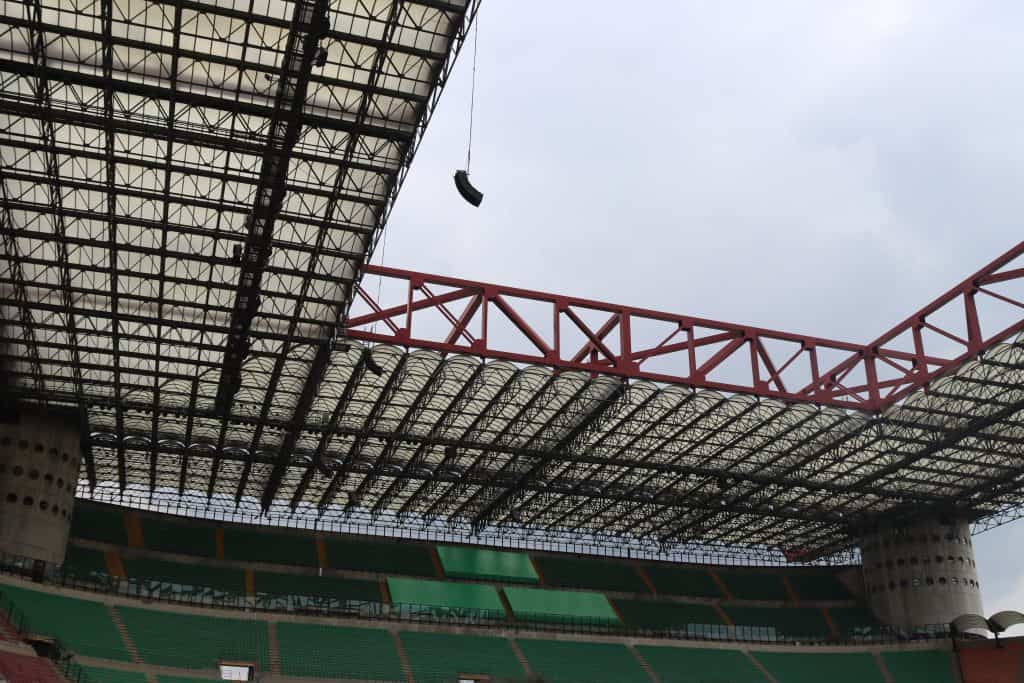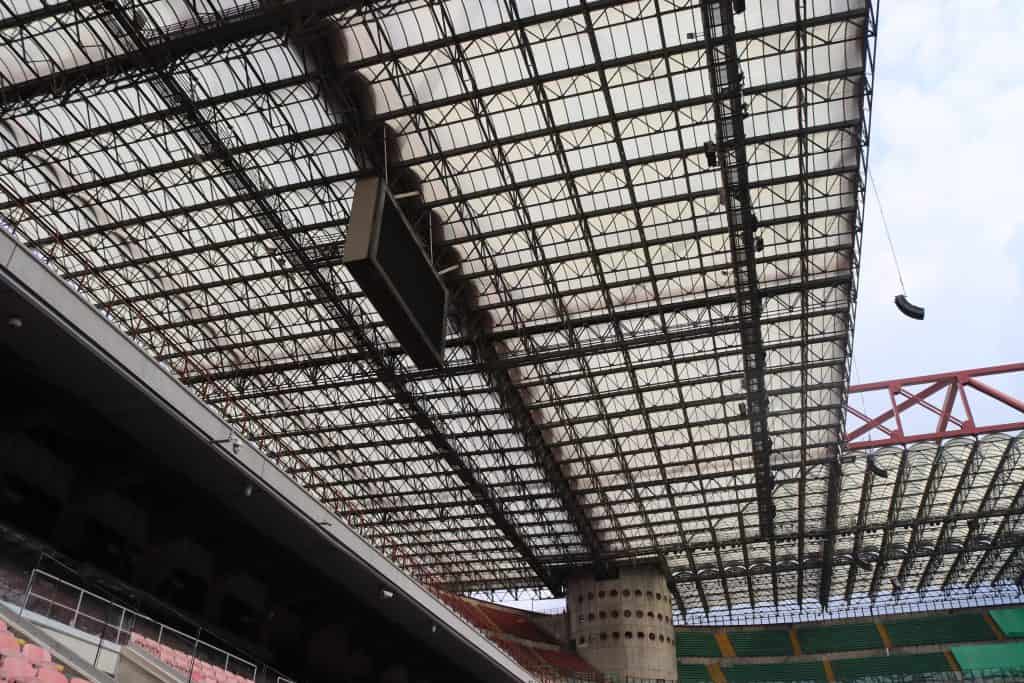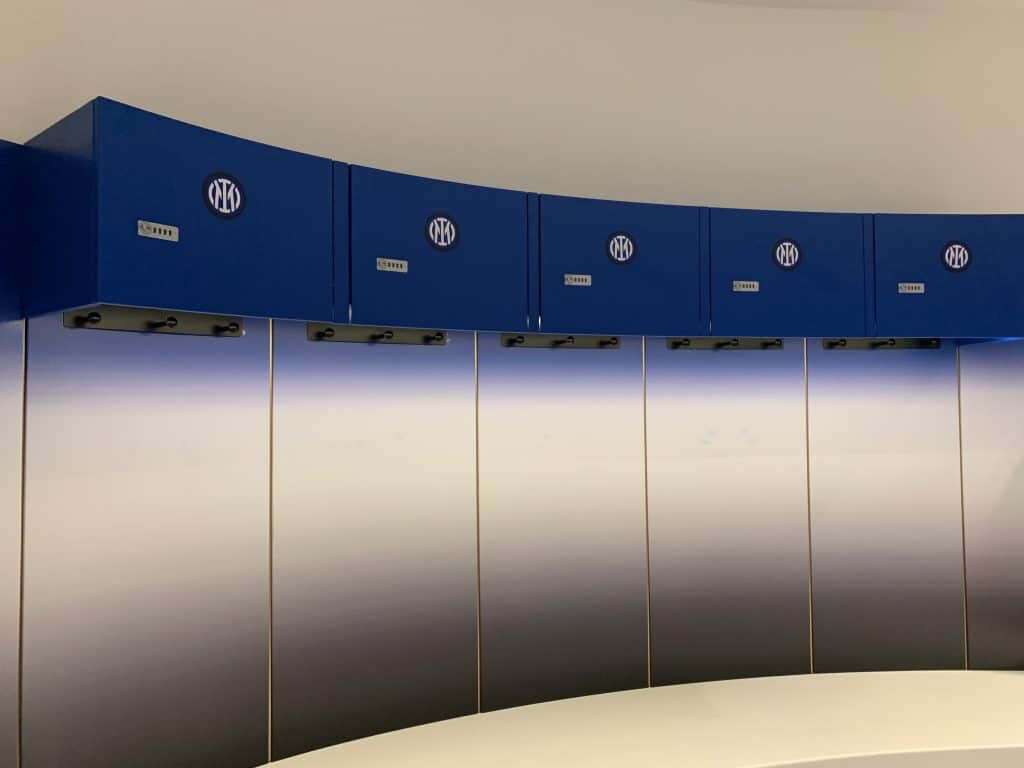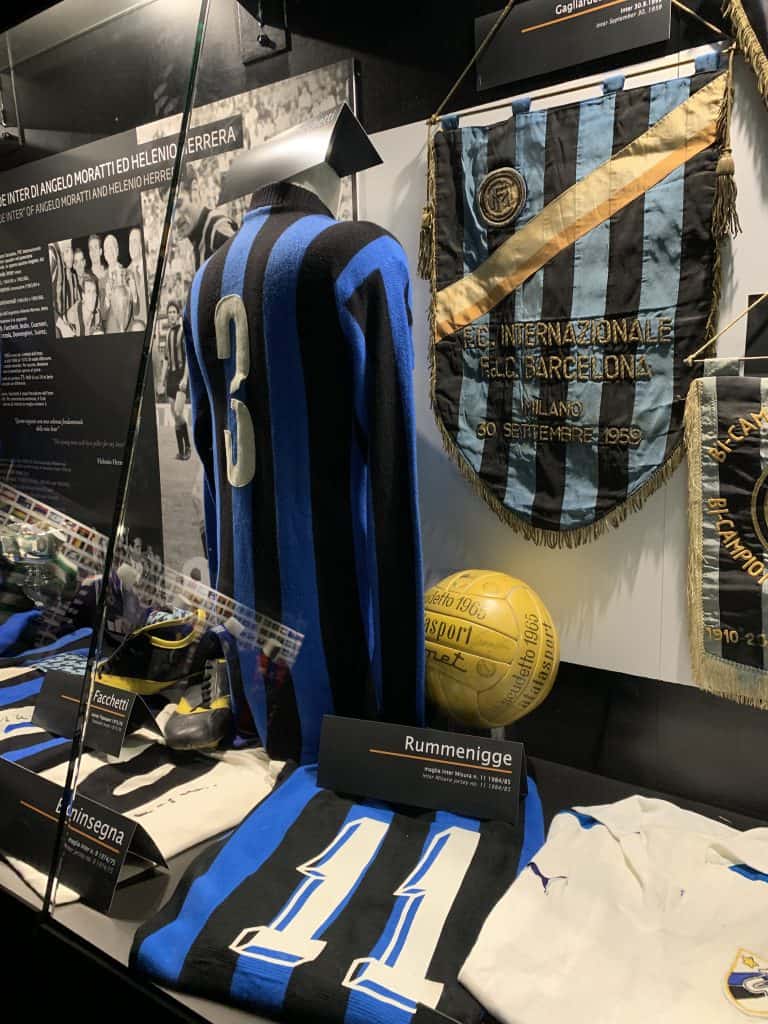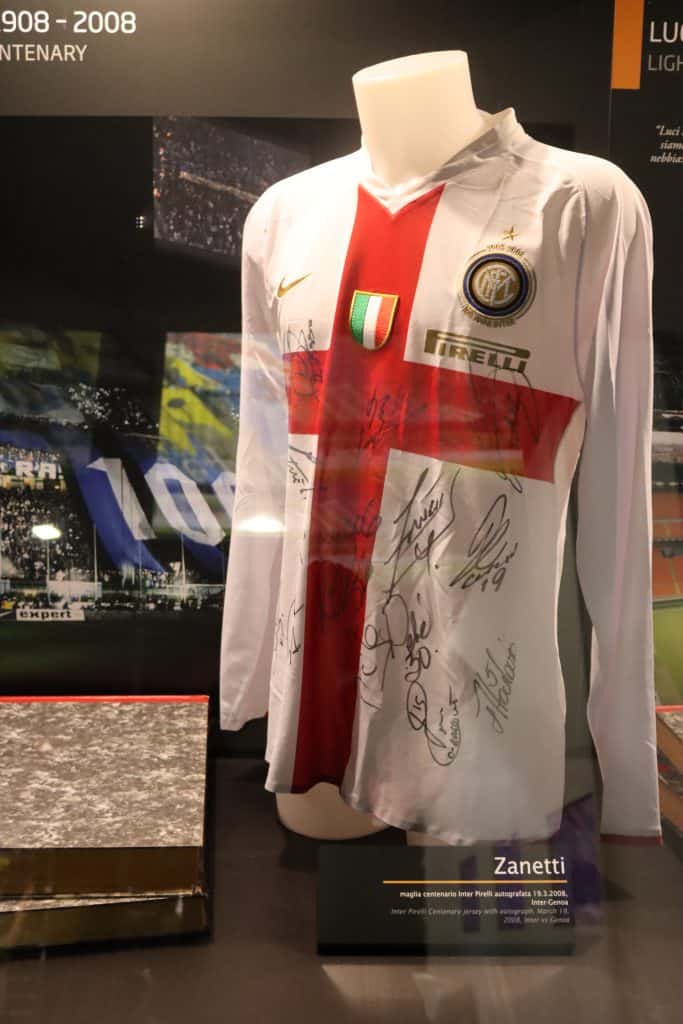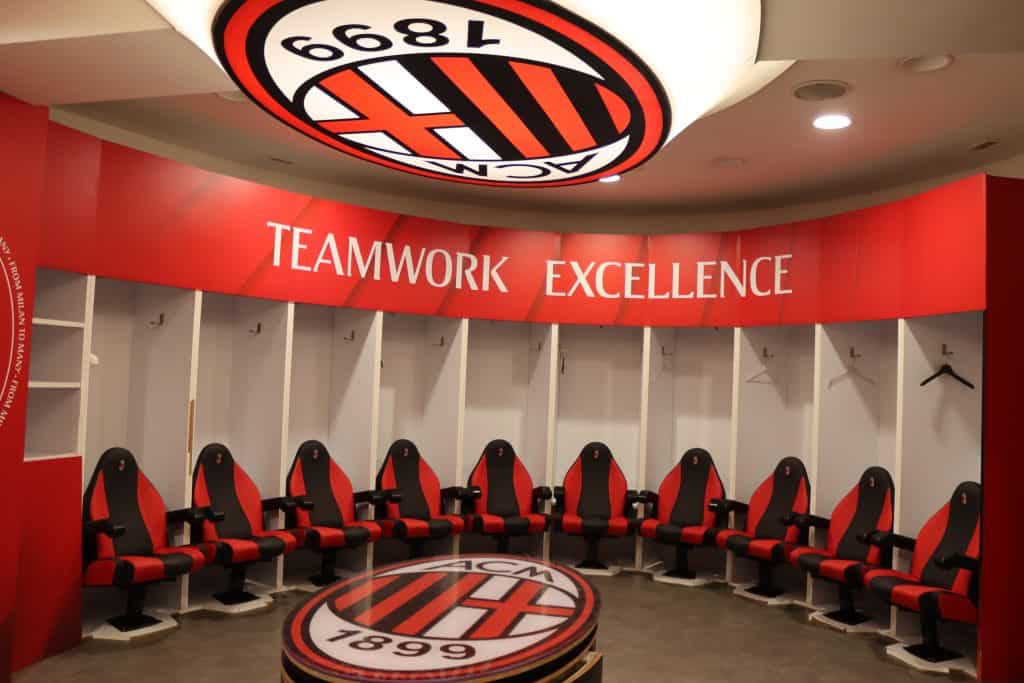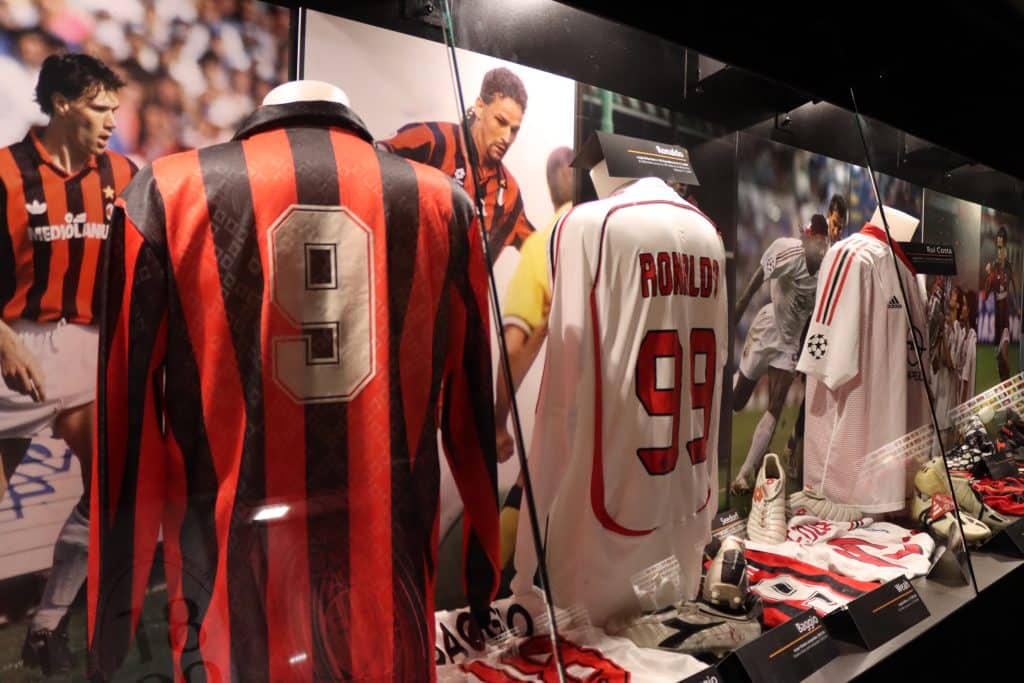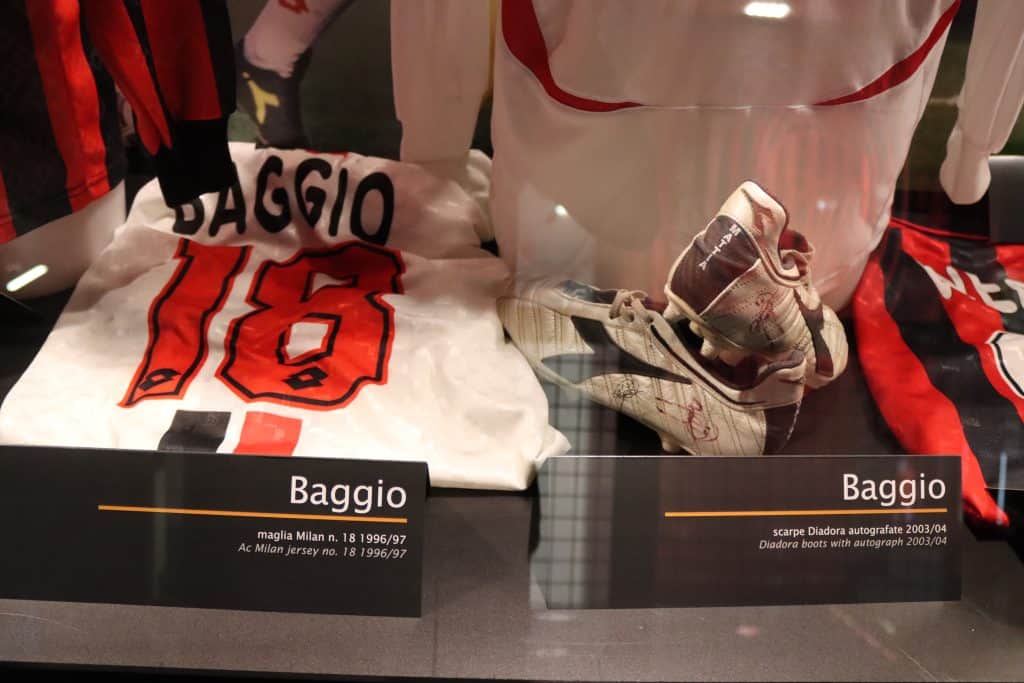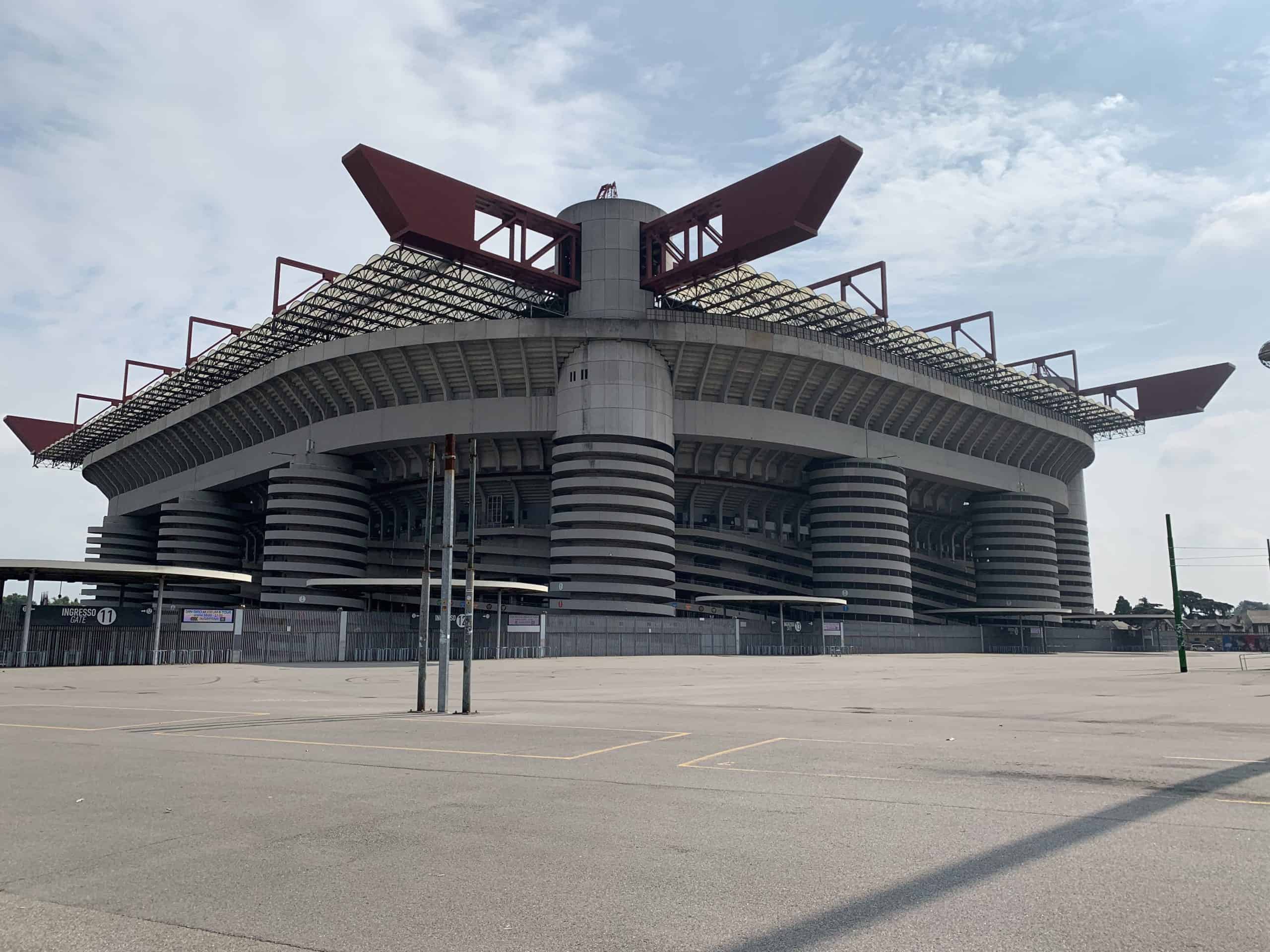
The San Siro Stadium, named after the name of the Milanese district in which it is located, has been named since 1980 after Giuseppe Meazza, one of the greatest Italian footballers, who during his career has worn the shirts of Inter and Milan.
Considered one of the symbols of the city of Milan, as well as one of the most famous stadiums in the world, the San Siro Stadium has earned the name of “La Scala del Calcio” for its prestige and importance.
In 1925 the President of Milan, Piero Pirelli, urged the construction of a football stadium near the Hippodrome.
The Municipality of Milan, after buying the stadium, started in 1935 a first expansion operation that gave rise to the construction of four curves thus joining the existing stands and increasing the capacity up to 55,000 seats.
In 1955 a supporting structure was built for a second ring of stands that overlook, and partly cover, the old stands. The total capacity thus rises to 85,000, of which about 60,000 are seated.
On the occasion of the 1990 Football World Cup, the Municipality of Milan decided to begin a profound renovation of the stadium by opting for the design of an architecturally surprising solution, through the construction of a third ring and the coverage of all 85,700 seats.
The San Siro Stadium with its 75,817 seats is today the largest in Italy.
During the guided tour you can retrace the real itinerary of the players, passing from the mixed area to the changing rooms of both teams; then the entrance tunnel to the field, at the bottom of which will open the most exciting and magical view of the “Scala del Calcio”.
The San Siro Museum, the first in Italy set up inside a stadium, tells the story of the two teams Inter and Milan, through a collection of unique memorabilia in the world: historical jerseys, cups and trophies, shoes, art objects, memories of all kinds that have entered the legend of world football, but above all in the hearts of football fans.

